
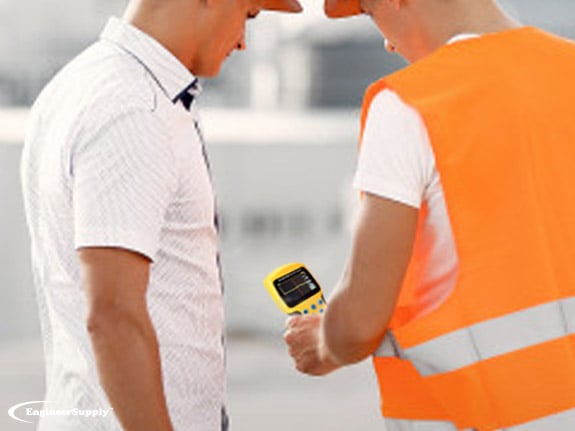
Due to the increasing number of utility lines that run underground, finding them has become more of a challenge. As the ground beneath our feet continues to fill up with pipes, cables, and electrical wiring, it’s important to know where they’re located because the safety of you and your crew may depend on it. Many contractors just show up and start digging, which is fine if the markings are accurate. But it could be slightly off, which means that you may not be able to find that line. The principle of a pipe locator is similar to tuning into a radio station. It picks up a specific frequency. In many cases, each line has a different charge or signal (like different radio stations), but some lines don’t send out anything at all. In these situations, a transmitter can be used to induce a signal through the line (which will allow the locator to pick it up).
If you’re looking for a pipe or utility locator, you will find many different types and models. But here is a list of some of the best pipe locators on the market.
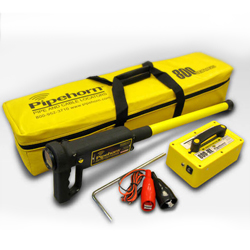
This dual-frequency underground utility locator is always recommended over Pipehorn’s single-frequency model. Because it has the 9kHz frequency that’s needed to find utility lines buried deeper underground, it has the range you need to find a number of underground pipes and cables. With its superior high-frequency performance, it's one of the best utility location tools in the industry when direct connect isn’t possible. And for the toughest conductors (such as coated iron pipes with insulated joints or street and parking lot lights), nothing else will sweep an area for unmarked utility lines than this utility locator.
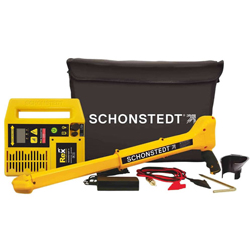
This multi-frequency pipe locator by Schonstedt is a great choice for the working professional, because it has the following features:
- The transmitter is less than 2 inches thick and weighs less than 4 pounds.
- The entire unit fits easily into a custom storage bag.
- The receiver and transmitter together weigh under 7 pounds for an ultralight design.
- The receiver can retract for easier carrying.
- Capable of 512 Hz, 33 kHz, and 82 kHz frequency detection.
- Capable of 50/60 Hz passive and 512 Hz sonde detection.
- The transmitter comes with rechargeable batteries.
This unit is built for utility professionals in the water, sewer, gas, electric, and telecommunication industries.
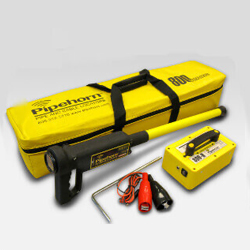
With the ability to detect frequencies of up to 480 kHz, this pipe locator can find utility lines that are buried down to 18 feet deep (depending on the type of connection, the condition of the soil, and how well it can conduct the signal). It also has a fast-response signal strength and a sharp audio tone that allows for precision pinpointing. And with a watertight reinforced receiver wand, it's incredibly durable. The transmitter has a high-impact ABS housing that’s bright yellow, so it’s easier to see.
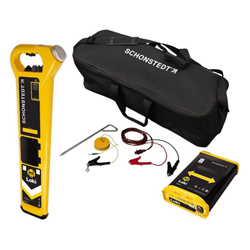
This utility locator is perfect for “sweeping” a large area to find buried assets quickly and easily. The Schonstedt Loki has a number of features that support the quick and easy detection of underground utility lines. Some of them include but may not be limited to:
- The 512 Hz frequency can be used to trace metallic pipes, while the 82 kHz frequency can find hard-to-locate jointed pipes.
- The simple mode selection matches the device to the signal type you need to locate.
- The Sonde Mode can find a signal being transmitted by a compatible sonde.
- The Transmitter Mode can find transmitter signals being imposed on buried utilities.
- The Power Mode can find the electromagnetic fields being generated by loaded power cables.
- The Dual Mode simultaneously searches for and identifies transmitter and power signals for quicker sweeps.
- The ShallowAlert feature will warn you of the possible presence of shallow cables and utility lines in every mode.
- The NoiseProtect feature allows you to use the device in areas that are electrically noisy.
Be sure to pick yours up at Engineer Supply today!
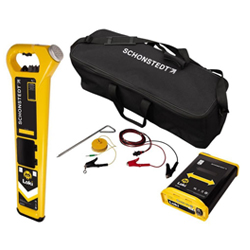
With a receiver that weighs 4.9 pounds and a transmitter that weighs 4.0 pounds, this unit is a lightweight tool that’s perfect for finding pipes, cables, and underground utility lines in large areas. It also has a IP54 rating, which makes it resistant to water and dust. The transmitter has a built-in speaker that generates an audio signal, which can be heard over road traffic. The receiver also has a detachable speaker that can double as an earpiece.
If you’re looking for an underground utility locator to help you find buried pipes and cables, be sure to look at what we have at Engineer Supply.

Frequently Asked Questions
How can I find a pipe that's buried underground?
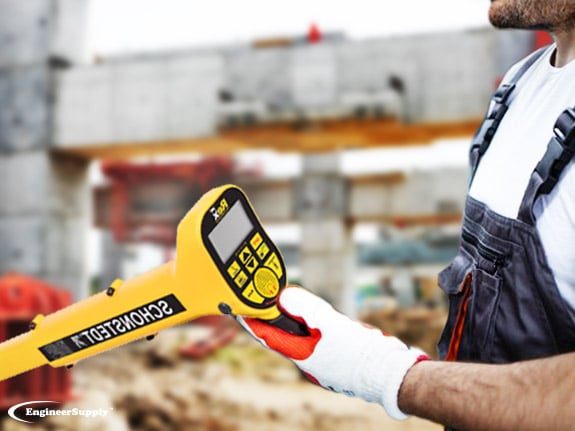
There are a few common ways you can find underground pipes. Some of them only work on metallic objects, while others can work on both. Finding PVC pipes can be difficult and requires a special process, so not every utility locator will be able to do it. Here are some of the ways you can find objects buried underground:
- Acoustic Method— Involves the holding of branches or rods over the ground to determine subsurface locations based on their movements. While the accuracy of this method has been questioned, some people swear by it.
- Ground Penetrating Radar (GPR)— This method of using a pipe locator can be fairly effective, because it can locate buried non-metallic and metallic objects. It produces a two-dimensional cross-section image of any subsurface items, including buried PVC pipes and other objects.
- Electromagnetic Conductivity (EM)— This is a highly specialized and expensive way to find underground objects. And while it can find underground wires or electrical lines, it can’t be used to find buried PVC pipes.
Feel free to look at the broad selection of utility location tools we have at Engineer Supply.
How does a pipe locator work?
A pipe and cable locator has both a transmitter and a hand-held receiver. It's also one of the most common tools used to find underground utility lines. The transmitter is used to send a signal into the pipe or cable, while the receiver can be used to find the signal that the line is producing.
Can I rent a pipe locator?
You can rent a variety of pipe locators and survey equipment that can make even the most complicated jobs easier. Because there are so many options available, it may be hard to to know exactly what you need. By renting an underground
utility locator, you can try out the unit before you make a purchase.
What frequency should I use for my pipe locator?
The depth to which any kind of
utility locator can find objects underground will depend on the sensitivity of the device as well as any number of external factors. So if you’re looking for one of the best selections of pipe and cable locators, be sure to look at what we have at Engineer Supply.
Where can I buy quality engineering tools?
Finding a frequency that will give the locator the ability to send and detect a clear signal will depend on a number of factors, because different frequencies act differently according to the conductivity of the line and other ground conditions. Even the soil surrounding the line can positively or negatively affect the flow of electrical current.
If you need to find a pipe locator that you can use on your next project, feel free to look at what we have at Engineer Supply.

Please Wait...
